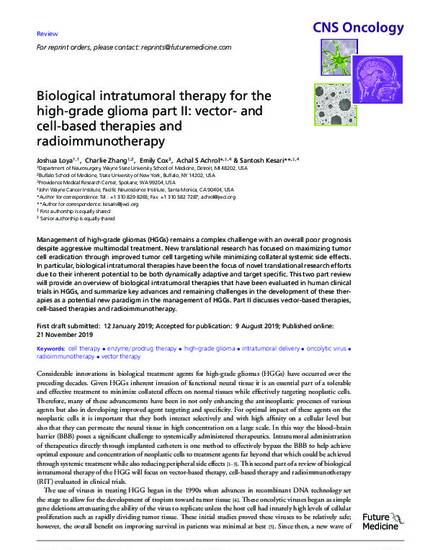
Management of high-grade gliomas (HGGs) remains a complex challenge with an overall poor prognosis despite aggressive multimodal treatment. New translational research has focused on maximizing tumor cell eradication through improved tumor cell targeting while minimizing collateral systemic side effects. In particular, biological intratumoral therapies have been the focus of novel translational research efforts due to their inherent potential to be both dynamically adaptive and target specific. This two part review will provide an overview of biological intratumoral therapies that have been evaluated in human clinical trials in HGGs, and summarize key advances and remaining challenges in the development of these therapies as a potential new paradigm in the management of HGGs. Part II discusses vector-based therapies, cell-based therapies and radioimmunotherapy.
Available at: http://works.bepress.com/emilyj-cox/28/
